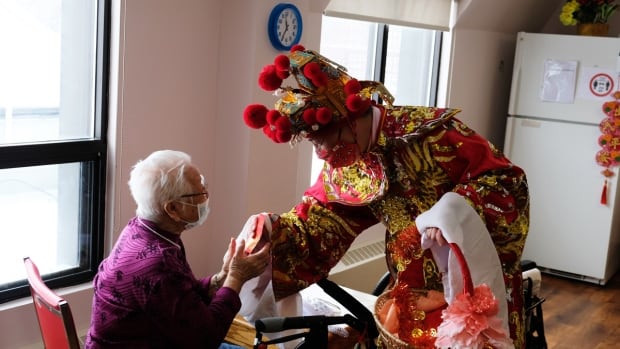
Final month, the Canadian Museum of Historical past introduced that it will cancel its Canada Day celebrations after unmarked graves have been discovered on the websites of former residential colleges throughout the nation — considered one of various changes it is making within the wake of the traumatic discoveries.
In an electronic mail to CBC Information, the museum in Gatineau, Que., stated different modifications it has deliberate embody signage detailing the historical past and ongoing affect of residential colleges, a content material warning for reveals that coated the subject, and a full evaluate of its content material.
CBC Information reached out to greater than a dozen of museums throughout the nation about how they have been addressing the legacy of residential colleges in Canada.
Responses from the museums different: Some pointed to long-running reveals displayed in session with Indigenous communities, others hosted ceremonies to honour residential college victims and survivors, and some stated that they’d long-term plans to handle the problem.
However a troublesome process lies forward: How do museums higher inform our nation’s story in a method that precisely displays the position of Canadian establishments in destroying Indigenous lives and communities by the residential college system?
CBC Information spoke with an Indigenous artist and the executives of two main Canadian museums to get a way of what modifications may very well be in retailer and what they imply for reconciliation.
Nice artwork captures who we’re, says CEO of human rights museum
Isha Khan, CEO of the Canadian Museum for Human Rights in Winnipeg, says the position of museums has developed, from showcasing artifacts to amplifying voices and tales.
On the subject of residential colleges, the establishment at the moment reveals a bit referred to as Witness Blanket, which was first displayed there in December 2015.
It’s a wood “quilt” made by Indigenous artist and grasp carver Carey Newman, meant to chronicle the residential college expertise by a set of things from survivors, former college websites, authorities buildings and church buildings.
“I name it a bit of reality,” Khan stated of the paintings. “I believe what we realized is that artwork is highly effective. Nice artwork captures who we’re and the place we have been.
“You develop a very profound respect for it being extra than simply an artifact … this being a bit of somebody’s life, their household historical past, one thing that is filled with emotion.”
Khan was appointed to the CEO place final August, after an exterior report discovered that there was “pervasive and systemic” racism and content material censorship on the museum. One other report launched solely final month outlined allegations of abusive and fetishistic behaviour towards racialized male workers, particularly Black males, whereas they labored for the establishment.
As a result of museums seize historic narrative and reminiscence, Khan stated, there may be potential for these establishments to find out how we cope with the darkish components of the nation’s historical past and the way we form our nationwide id with these realities in thoughts.
“We’re a platform for storytelling,” she stated. “And for those who have a look at it that method, there may be limitless potential for us to teach, outline who we’re as a society at anybody time limit, after which to ensure there’s a reminiscence of the place we got here from.
“We now have a whole lot of work to do, as a result of earlier than we transfer ahead, you understand, you discuss in regards to the path of reconciliation. We have to know our reality — and we do not understand it.”
RCMP museum plans to seek the advice of with Indigenous communities

The RCMP Heritage Centre in Regina has not up to date its reveals for a number of years, stated its newly appointed CEO, Tara Robinson. However that can change because it seeks nationwide museum designation.
“There are numerous tales, and a few include nationwide pleasure, some with nice celebration,” stated Robinson. “However others include disappointment and a few collective grief — [an example being] the residential colleges throughout this nation.… And we imagine that these tales have to be advised.”
The museum plans to inform the historical past of the RCMP from a number of views, together with that of Indigenous communities. In the course of the residential college period, the nationwide police pressure was accountable for forcibly eradicating kids from their households and houses in order that they may very well be despatched to the faculties.
“I strongly imagine that museums are right here to teach and they’re to teach in regards to the good, the unhealthy and the in any other case,” Robinson advised CBC Information.

In Could, it was introduced that the RCMP Heritage Centre could be transitioning to a nationwide museum, with $4.5 million in funding from the federal authorities set to be distributed over a three-year interval. Board chair Steve McLellan stated that the funding would enable the museum to interact with Indigenous communities greater than it has prior to now.
Nevertheless, he additionally stated that present reveals make minimal reference to the darkish historical past between the Mounties and Indigenous communities in Canada.
That very same month, the RCMP launched information which confirmed 102 members who establish as Indigenous had left the pressure within the final three years, after the determine was requested by member of Parliament Matthew Inexperienced.
Now, the RCMP Heritage Centre has a possibility — and a accountability — to construct relationships with Indigenous communities and collaborate with them in historicizing the nationwide police pressure, Robinson stated.
“The session with Indigenous communities goes to be in depth,” she stated. “In all probability probably the most in depth we’ve got ever achieved.”
Colleges solely ‘one half’ of RCMP position in colonization, artist says

Carey Newman, the Indigenous artist, professor and grasp carver behind Witness Blanket, stated the RCMP performed a a lot bigger position in colonization past residential colleges.
“If we will come to grips with our id, with our collective id of what it means to be Canadian, I believe that this step towards acknowledging the entire historical past in relation to … the RCMP on this nation is vital,” stated the artist, whose conventional title is Hayalthkin’geme.
“I hope that it is not restricted to residential colleges.”
He pointed to different situations of the RCMP’s historic interactions with Indigenous communities, similar to clearing them from the Prairies and implementing the reserve system.
Newman is the son of a residential college survivor. An idea that helped him perceive his father, he stated, was what he described as “concentric trauma,” which roots intergenerational trauma in its authentic supply of hurt, fairly than implying accountability on the people and households affected by it.
“I can see all of the methods wherein it affected my dad, and the way that impacted our relationship and the way I course of that within the paintings I do,” Newman stated. “However possibly extra importantly, in my private relationships and the way I strategy being a father to my daughter.”

Having labored with the Canadian Museum for Human Rights to show the Witness Blanket, Newman stated change is feasible “if the intent is there” — however that establishments just like the RCMP Heritage Centre might want to stroll the stroll.
“I understand how troublesome it may be to create change,” he stated. “So I assume there is a little bit of skepticism in me, ready to see how these phrases are translated into motion; what the exhibit says and appears like.”
Do you will have details about unmarked graves, kids who by no means got here dwelling, or residential college employees and operations? Electronic mail your tricks to CBC’s new Indigenous-led group investigating residential colleges: [email protected].







